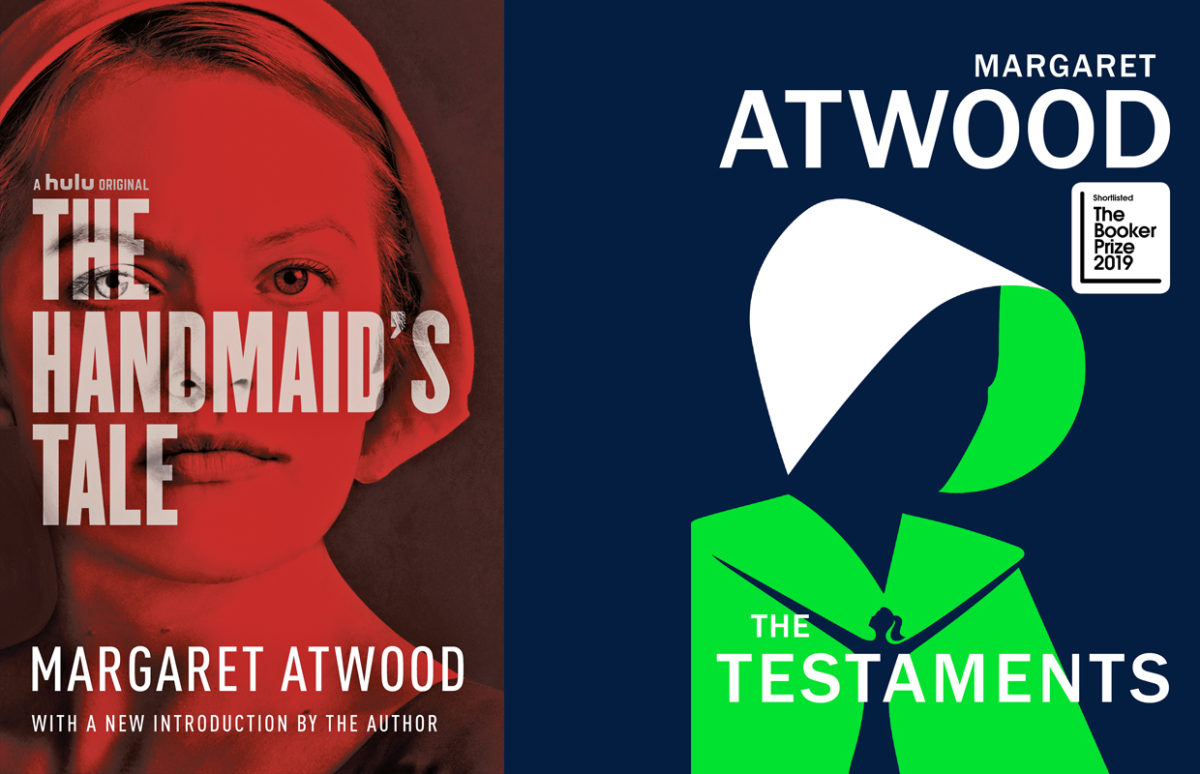The literary event of the year in the Anglophone world is Margaret Atwood’s sequel to The Handmaid’s Tale 34 years after the original.
The Testaments was released worldwide on 10 September to scenes reminiscent of Harry Potter book launches. Fans queued up at bookshops to buy the book at midnight and enjoy themed events. The London launch featured the 79-year-old author in person. The following day, her on-stage discussion of the book at the in London was and live-streamed to over 1000 cinemas around the world. The book had been strictly embargoed before the release date, except for confidential copies distributed to the judges of this year’s Booker Prize, who duly included it on the short list.
The Canadian author’s 1985 dystopian tale of a world where an environmental disaster has compromised human fertility and the remaining fertile women have become the de facto slaves of rich and powerful families, for whom their job is to produce children.
The Handmaid’s Tale has remained perennially popular, and a mainstay of Women’s Literature courses around the world. But the arrival of Donald Trump and other populist leaders around the world has been accompanied by attacks on women’s reproductive rights. The international success of HBO’s 2017 TV adaptation inspired by the novel brought it back into the public eye.
Women dressed in the distinctive red robe uniforms of Handmaids have become a common sight at demonstrations about women’s health and reproductive rights.
The Testaments
Ever since the first book’s publication, Atwood has been begged by fans for a sequel. The Handmaid’s Tale is narrated by a Handmaid, Offred. It ends ambiguously as she is abducted — by the police or by the resistance movement? It is left to readers’ imagination.
The Testaments is set 15 years later and is narrated by three women. One is from the original book: Aunt Lydia, one of the prison-guard type figures who train and discipline the Handmaids. The other narrators are young women. One grew up in Canada. The other is from the first generation who only have only known the new Gilead regime. They have never known a time when women were allowed to be educated and earn money, choose their life partners and roles in life.
Fiction or Reality?
In 2017, Atwood said, “When it first came out The Handmaid’s Tale was viewed as being far-fetched. However, when I wrote it, I was making sure I wasn’t putting anything into it that humans had not already done somewhere at some time.”
In introduction to The Testaments, Atwood says, “Dear Readers: Everything you’ve ever asked me about Gilead and its inner workings is the inspiration for this book. Well, almost everything! The other inspiration is the world we’ve been living in.”
She reflects on the Handmaid-themed protests around the world, “It’s a question of things escaping from a book into the real world, and the author at that point has zero control of it. But none of this would be happening unless countries were putting people in charge of women’s bodies who are not those women. If everything were fair and government really was by consent of the governed, only potentially pregnant women would be able to vote on these matters.”
In another interview, she remarked, “What these restrictive laws about women’s bodies are claiming is that the state owns your body. There is a parallel occasion for men and that would be the draft: the state owns your body and you have to go to war. But when they do that, they pay for clothes, lodging, food, medical expenses and a salary.”
Read Atwood’s introduction to the new edition of The Handmaid’s Tale and see the series’ cast encourage viewers to take action in Shine Bright
 Read Atwood’s introduction to the new edition of The Handmaid’s Tale and see the series’ cast encourage viewers to take action Shine Bright 1re Advanced File 17: "Brave New Women",.
Read Atwood’s introduction to the new edition of The Handmaid’s Tale and see the series’ cast encourage viewers to take action Shine Bright 1re Advanced File 17: "Brave New Women",.Copyright(s) :
Penguin Random House






